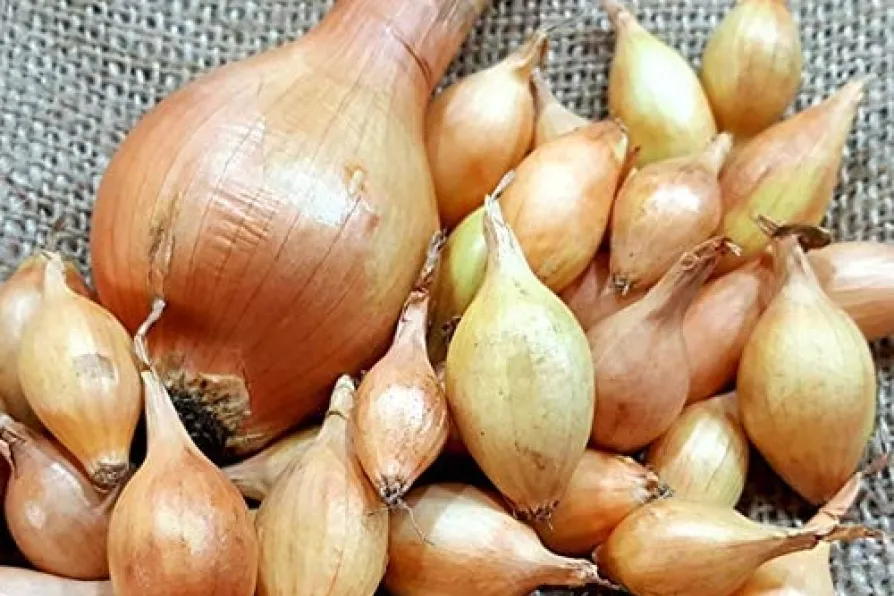SOLOMON HUGHES explains how the PM is channelling the spirit of Reagan and Thatcher with a ‘two-tier’ nuclear deterrent, whose Greenham Common predecessor was eventually fought off by a bunch of ‘punks and crazies’


ONE of the most useful vegetables you can sow at this time of year is overwintering onions, also known as Japanese onions, because that’s where the original cultivars were bred.
They are bulb onions — similar to, though generally a bit smaller than, familiar maincrop types — but they’re winter hardy and need less light than summer varieties.
Sown in August, planted out in September, they’ll be ready for eating early next summer.
Japanese onions fill a gap between last year’s stored crop and next year’s new harvest.
Just as importantly, they taste wonderful. Although they have a full onion flavour they are not at all hot, so they’re perfect for eating raw in sandwiches and salads.
There are several Japanese onions available in seed catalogues, but the one I always end up coming back to is senshyu yellow, which I find a reliable grower with an excellent flavour.
You’ll find it in most catalogues, either as seed or as sets. Planting sets, rather than sowing seed, is quicker, and there’s less that can go wrong.
Against that, seed-grown plants are considered less likely to bolt than those from sets — and seeds are a hell of a lot cheaper.
You can sow them directly into the soil, sparingly to avoid overcrowding, in drills about half an inch (1.5cm) deep, to be either thinned or transplanted early next spring to a spacing of 6 inches (15cm).
But assuming that your vegetable plot is crowded at the moment, you might prefer to sow the seeds in pots, modules or trays for planting out a few weeks from now.
My preference is for modular trays, either plastic or polystyrene, filled with seed compost.
Those with a self-watering system — usually a reservoir and some sort of wick — are the best.
Some people sow the seeds singly, while others put three or four seeds in each module, then plant out each clump of seedlings at a slightly greater spacing.
I think the only real advantage of that is that it uses fewer modules and less compost.
Place seeds on the surface of the compost, and only cover them shallowly with more compost.
Keep the trays somewhere sheltered and light, and water them if necessary to keep the compost moist but not soggy.
In late September or early October you can plant the seedlings in their final positions.
Try to use a piece of ground that hasn’t had much fertiliser or compost in the last few months, as soil that’s too rich may encourage soft autumn growth in the onions which can help diseases take hold.
Any time from May to July, depending on conditions, their leaves will keel over and their skins turn brown, meaning the bulbs are ready for lifting.
Overwintered onions don’t keep as long as maincrop do; they’re meant for use in the summer, and perhaps into the autumn.
You could start harvesting them as green onions as soon as they’re big enough to be worthwhile, probably in late spring.

A corrupted chemist, a Hampstead homosexual and finely observed class-conflict at The Bohemia

Beet likes warmth, who doesn’t, so attention to detail is required if you’re to succeed, writes MAT COWARD

MAT COWARD tells the extraordinary story of the second world war Spitfire pilot who became Britain’s most famous Stalag escaper, was awarded an MBE, mentored a generation of radio writers and co-founded a hardline Marxist-Leninist party

Generous helpings of Hawaiian pidgin, rather good jokes, and dodging the impostors














